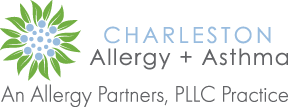1. Spring symptoms are all gone, but they’ll be back
If your child suffered from allergy symptoms in the spring, but has improved over the summer, then the fall might be the perfect time for your child to see a board-certified allergist. Patients who suffer from mainly tree and grass pollen allergies should consider FDA-approved subcutaneous immunotherapy (allergy shots). Studies have shown that immunotherapy is very beneficial in reducing symptoms of allergic rhinitis once patients reach maintenance dosing. Therefore, starting immunotherapy in the fall gives patient the opportunity to reach maintenance dosing before spring. Also, FDA-approved sublingual (oral) tablets from grass should be started three months before grass season so testing for grass allergy should be performed prior to grass season starting.months before grass season so testing for grass allergy should be performed prior to grass season starting.
2. Wash those hands
As kids start back to school in the fall, the germs start spreading like crazy. Viruses that cause upper respiratory infections will also trigger asthma symptoms. Good hand hygiene is important to decrease the risk of children spreading germs and triggering asthma flares. Also, if your child has asthma, it is important they are taking their asthma medications as prescribed to decrease the risk of an asthma flare.
3. Beware of outdoor allergens
Many people think mainly of spring when they talk about outdoor allergies, but fall can be just as problematic for allergic patients. Starting in late summer through the first frost, we see pollen from many varieties of weeds. In addition, there are outdoor molds present in the fall, one of which grows on wet leaves and has been shown in studies to cause worsened symptoms in patients with asthma.
4. Don’t forget about indoor allergens
While dust mites are present year-round indoors, their population is peaked in the late summer and fall after expanding during a hot and humid summer. Worsened allergy symptoms in the fall could be due to outdoor allergen exposure or indoor exposure to dust mite. If allergy symptoms worsen in the fall, it is important to see a board-certified allergist for testing to determine which allergens are causing your symptoms and discuss whether you would benefit from immunotherapy.
5. Update your Food Allergy Anaphylaxis Plan
As with asthma, most schools require a food allergy action plan to be updated yearly including Benadryl doses, epinephrine auto-injector dosing and physician signature. Scheduling an appointment with your child’s board certified allergist is important to make sure your child has the right epinephrine auto-injector dose. Also, your child’s allergist may want to repeat skin or blood testing for a food allergy to determine if your child still has that allergy or has developed tolerance.
6. Update your Asthma Action Plan
Most schools require an updated school form to be completed by your asthma doctor for your child to have asthma medications at school. If your child has been diagnosed with asthma, then your child should have a rescue inhaler available at school. This is an essential time of year to follow up with your child’s asthma doctor to make sure their asthma is well-controlled and they are on the right medications as school starts back.
7. Review technique
For those young adults with asthma who might be old enough to carry their own inhaler at school, this is a great time of year to see your asthma doctor and have your child review technique with a specialist.
8. Oral itching should be checked out
- If your child starts complaining of oral itching or lip/tongue swelling with certain raw fruits or vegetables, then it’s time to see a board-certified allergist. Testing can help determine whether those symptoms are due to a food allergy or a pollen allergy (like the fall weeds).
If you are find that your child’s allergy and/or asthma symptoms are not going away or are not controlled, please give us a call so they can be evaluated.




